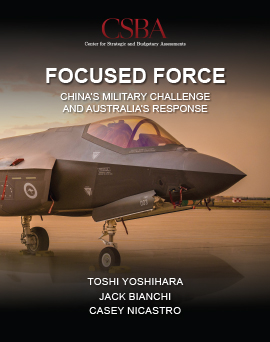
China’s ambitions, assertiveness, and massive military expansion have stimulated a major shift in Australia’s defense policy. From the AUKUS partnership to new allied posture arrangements to the acquisition of long-range strike capabilities, Australia is carrying out a series of ambitious initiatives to strengthen deterrence. Canberra has further called on the Australian Defence Force (ADF) to become a “focused force” designed to deal with the highest-order dangers. As Australia undergoes this strategic reorientation, it confronts weighty investment and divestment decisions that could have lasting consequences for force structure and posture.
To better understand Australia’s force planning challenges, the Center for Strategic and Budgetary Assessments (CSBA) organized exercises in Washington, D.C. and Canberra to assess alternative ADF force structures and postures in response to China’s expected military challenge over the next decade. Using CSBA’s Strategic Choices Tool, a web-based application, exercise participants rebalanced the Chinese and Australian armed forces in an interactive simulation to consider the likely tradeoffs needed to tailor the ADF’s capabilities for the future.
In Focused Force, authors Toshi Yoshihara, Jack Bianchi, and Casey Nicastro capture the key findings and insights from the exercises and offer independent analysis of Australia’s near- and long-term choices. The report identifies trends in Chinese military modernization that could prove most stressful to Australia’s security. It examines Australia’s major defense programs, alliance initiatives, and future capabilities, including AUKUS Pillar I, the U.S. rotational presence, and long-range strike capabilities, that could go far to shore up deterrence and warfighting.



























